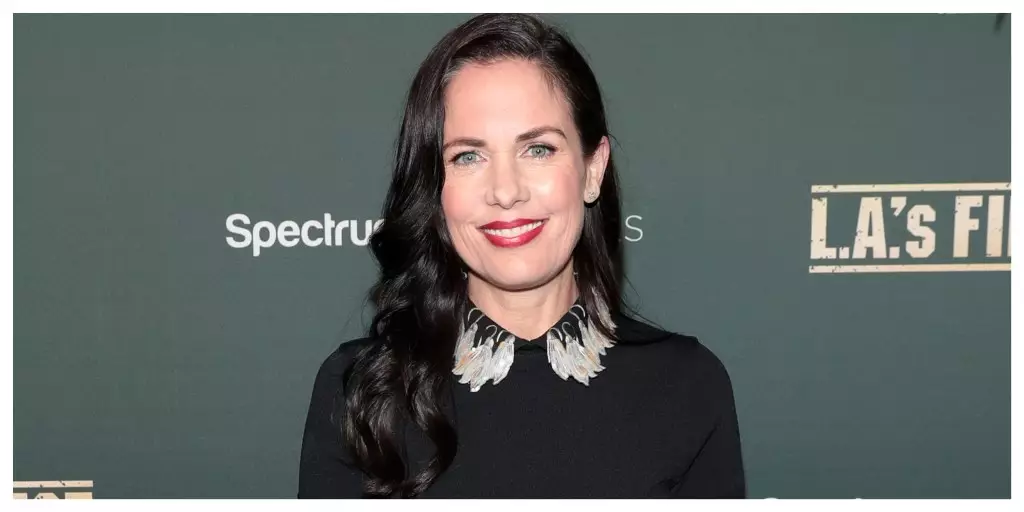The television landscape is undergoing a seismic shift, with both production practices and viewership dynamics evolving rapidly. Katherine Pope, the president of Sony Pictures Television Studios, shared her insights during a recent keynote address at the Italian event MIA, emphasizing the importance of learning from past practices to navigate future challenges. With her extensive experience in the industry, particularly her tenure at NBCUniversal before her transition to Sony, Pope’s perspective offers a valuable glimpse into the future of television production.
Pope’s reflections on the traditional U.S. broadcast system served as a foundation for her argument on improving production efficiency. She articulated that past efficiencies stemmed from stringent timelines and financial constraints that demanded creative and expedient solutions. “There was a sense of time and money in the U.S. broadcast system,” she explained. This rigorous structure fostered a culture of urgency and accountability, which she argues is crucial in today’s landscape, suggesting that a return to such principles would benefit modern productions.
The challenges currently facing the industry, including rising production costs and a saturation of content, seem to echo an era before the streaming boom. Pope noted, “We’re now seeing the hangover of the boom times,” a reminder that while demand for high-quality content has surged, so too have the accompanying challenges. By reintroducing a sense of urgency, she believes creators can navigate these difficulties more effectively, encouraging the view that “creative production budgetary friction” might yield unexpected solutions.
A significant theme in Pope’s keynote was the hope for a synthesis between the traditional efficiency of broadcast production and the artistic freedom afforded by recent developments in television storytelling. With Sony Pictures Television’s current projects ranging from the phenomenon of “The Boys” to its growing list of spinoffs, the studio is traversing this delicate balance. Pope predicts that the future lies in harnessing the best aspects of both worlds — the diligence of the past and the creative freedom of the present.
She stated, “The sweet spot in the future would be where producers take the best parts of that broadcast system, but also integrate the artistry we’ve introduced to TV in the last eight years.” This integration could pioneer a new production model that not only meets audience expectations but also sustains the creative impulses driving the industry.
Amid the tumultuous landscape of the entertainment industry, which has seen numerous companies preoccupied with the “streaming wars,” Pope underlined the importance of clarity and focus in production strategies. She remarked on Sony’s resilience, maintaining a singular commitment to creating compelling narratives and high-quality entertainment. “I feel really lucky to be part of a company that is just focused on the reason we’re all here: great entertainment and stories told well,” she said, reiterating that this clarity is essential as the industry navigates complexity and rapid change.
Such steadfastness is increasingly vital as content creators and executives alike grapple with the pressures of a marketplace fraught with competition and uncertainty. By prioritizing storytelling over the metrics-driven approaches used by some contemporaries, Sony aims to foster an environment that supports artistic innovation.
An important part of her discourse focused on the pacing of series renewals and production timelines. Pope expressed frustration with the prolonged gaps between seasons that have emerged due to cautious, data-driven decision-making processes. She highlighted the detrimental impact this has on both the audience experience and the creative impetus driving showrunners. “The experience of watching eight episodes and then two years later watching the next eight is not a good fan experience,” she lamented.
Pope’s insights call for a reevaluation of how television projects are managed and released. She advocates for more proactive approaches that can help mitigate the long waits that challenge fan engagement. “Everyone in the business is recognizing these timelines have got to be crunched,” she observed, emphasizing a collective industry acknowledgment that audience retention in a crowded market relies on timely and consistent content delivery.
As the television industry continues to evolve, Katherine Pope’s insights shed light on the path forward. By blending the operational efficiencies of the past with the artistic innovations of recent years, Sony Pictures Television aims to redefine success in a rapidly changing landscape. The focus remains on engaging storytelling and respect for audience expectations — a balancing act that may prove essential in maintaining relevance within an increasingly competitive entertainment sphere. The evolution of television is ongoing, and with leaders like Pope at the helm, the future looks promising, albeit challenging.

